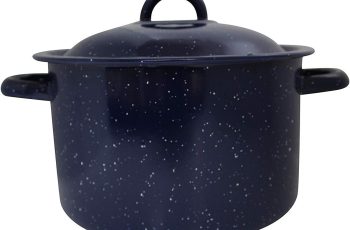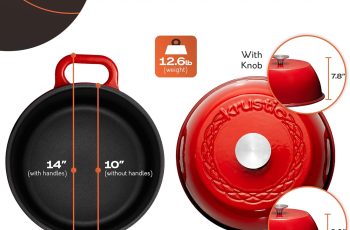Ad Blocker Detected
Our website is made possible by displaying online advertisements to our visitors. Please consider supporting us by disabling your ad blocker.
In this article, you will explore the fascinating history of the saucepan. From its ancient origins to its modern-day design, this essential kitchen tool has been a staple in culinary traditions for centuries. Discover how the saucepan evolved over time, gaining popularity in various cultures across the globe. Explore the ingenious innovations that have improved its functionality and versatility, making it an indispensable item in every kitchen. Join us on a journey through time as we uncover the intriguing story behind the saucepan and its enduring significance in the art of cooking.
Early Origins
Ancient Cookware
The history of the saucepan can be traced back to ancient civilizations, where early forms of cookware were used for culinary purposes. These ancient cookware items were typically made from clay or pottery, and were used for various cooking methods, including boiling, simmering, and stewing. The ancient Egyptians and Greeks were among the first to use these early cooking vessels, highlighting the importance of culinary traditions in these societies.
The First Metal Saucepans
As civilizations progressed, so did the technology and materials used in cookware production. The introduction of metal saucepans marked a significant development in the history of culinary tools. The first metal saucepans were made from bronze, which was widely available during ancient times. These early metal saucepans revolutionized cooking, as they were more durable and conducted heat more efficiently than their clay or pottery counterparts.
Development in Ancient Civilizations
Egyptian Innovations
The ancient Egyptians are often credited with several innovations in saucepan design. They were known to use various metals such as bronze and copper to construct their saucepans, making them more versatile in the kitchen. Additionally, they were pioneers in the development of handles, which made the handling of these vessels much more convenient.
Greek Influence
The Greeks also played a crucial role in the development of saucepans, particularly in terms of design and functionality. They not only improved upon the existing metal saucepans by introducing more sophisticated handles, but they also experimented with different shapes and sizes. The Greeks understood the importance of a well-designed saucepan, as it directly impacted the quality of the dishes prepared.
Roman Advancements
Building upon the innovations of the Egyptians and Greeks, the ancient Romans made significant advancements in the construction and usage of saucepans. They embraced the use of bronze and improved upon the design by adding pouring spouts, which allowed for easier transfer of liquids. The Romans also introduced the concept of a double boiler, which allowed for more precise temperature control when cooking delicate sauces and custards.
Medieval and Renaissance Period
Introduction of Handles
During the Medieval and Renaissance periods, saucepans underwent further improvements and refinements. One notable development during this time was the introduction of handles made from materials like iron or wood. The addition of handles made it easier to lift and carry the saucepans, enhancing their overall functionality and practicality in the kitchen.
Copper and Brass Pots
Copper and brass became the preferred materials for saucepan construction during the Medieval and Renaissance eras. These metals were prized for their excellent heat conductivity, allowing for quick and even heat distribution. The use of copper and brass also added an aesthetic appeal to the saucepans, as they exuded a sense of elegance and luxury in the culinary world.
Influence on European Cuisine
The advancements in saucepan design and materials during the Medieval and Renaissance periods had a profound impact on European cuisine. The improved heat distribution and control provided by copper and brass saucepans allowed for the development of more intricate and delicate dishes. Sauces could be simmered to perfection, and new culinary techniques emerged, elevating the art of cooking to new heights.
The Industrial Revolution
Mass Production
The Industrial Revolution marked a significant turning point in the history of saucepan production. With the advent of mass production techniques, saucepans became more accessible to a wider range of people, not just the affluent. This enabled households of all social classes to have access to well-constructed and functional saucepans, which greatly influenced their cooking capabilities.
New Materials
The Industrial Revolution also brought about the introduction of new materials in saucepan construction. Cast iron pans became increasingly popular during this time due to their durability and excellent heat retention. Cast iron saucepans quickly replaced the traditional copper and brass ones in many kitchens, as they were more affordable and easy to produce in large quantities.
Invention of the Double Boiler
Another important innovation during the Industrial Revolution was the invention of the double boiler. This device consists of two saucepans, one fitting inside the other, with the bottom saucepan holding water and the top saucepan holding the food. This ingenious design allowed for precise temperature control, especially when working with delicate ingredients like chocolate or custards.
Modern Innovations
Non-Stick Coatings
In the mid-20th century, the introduction of non-stick coatings revolutionized the world of saucepans. These innovative coatings, such as Teflon, made it possible to cook with minimal or no oil, reducing the need for excessive fat in recipes. Non-stick saucepans were also easier to clean, as food particles did not stick to the surface. This innovation greatly simplified cooking and appealed to health-conscious individuals.
Induction-Compatible Saucepans
With the rise of induction cooktops, saucepan manufacturers had to adapt to this new technology. Induction cooktops use electromagnetic fields to heat the saucepan directly, requiring a specific type of material in the saucepan construction. Modern saucepans are made with induction-compatible materials like stainless steel or cast iron, allowing for efficient and even heat distribution.
Designer Cookware
In recent years, there has been a growing market for designer cookware, including saucepans. Renowned chefs and celebrity endorsements have elevated the status of cookware, turning it into a coveted item in many kitchens. Designer saucepans often feature unique designs, high-quality materials, and ergonomic handles, combining both functionality and aesthetics.
Materials Used in Saucepan Construction
Copper
Copper saucepans have been prized for centuries due to their excellent heat conductivity. Copper distributes heat evenly, allowing for precise temperature control. These saucepans are ideal for delicate sauces and dishes that require quick and precise adjustments in heat.
Stainless Steel
Stainless steel saucepans have become increasingly popular due to their durability and resistance to staining and rusting. They are also non-reactive, making them suitable for cooking acidic or alkaline ingredients. However, stainless steel is not as efficient in heat conductivity as copper or aluminum, often resulting in uneven heating.
Aluminum
Aluminum saucepans are lightweight and excellent conductors of heat. They heat up quickly and evenly, making them ideal for everyday cooking. However, aluminum is a reactive metal, meaning it can react with certain foods, altering the taste and appearance of the dish. To mitigate this, aluminum saucepans are often coated with non-reactive materials.
Cast Iron
Cast iron saucepans offer exceptional heat retention and even heat distribution. They are loved for their ability to hold heat for extended periods, making them perfect for slow cooking or braising. However, cast iron saucepans can be heavy, making them less practical for everyday use.
Shapes and Sizes
Standard Saucepan
The standard saucepan is a versatile tool found in almost every kitchen. It typically has a flat bottom and sides that gently slope upwards. Standard saucepans come in various sizes, ranging from small for individual servings to larger ones for cooking larger quantities.
Sauté Pan
Sauté pans, also known as frying pans or skillets, have low, flared sides and a wide surface area. They are specifically designed for sautéing, browning, and frying foods. The wider surface area allows for better evaporation and caramelization of ingredients.
Stockpot
Stockpots, as the name suggests, are primarily used for making stocks and soups. These large, deep pots have high sides and a wide base, providing ample space to cook large quantities of liquid. Stockpots often come with a fitted lid to retain heat and prevent evaporation.
Dutch Oven
Dutch ovens are heavy-duty, versatile pots that can be used for a variety of cooking methods. They typically have a thick, tight-fitting lid and sturdy handles. Dutch ovens are known for their excellent heat retention and are ideal for slow-cooking, simmering, and braising.
Saucepan Accessories
Lids
Lids are an essential accessory for saucepans, as they help trap heat and steam, resulting in faster cooking times and preventing excessive evaporation. Lids also contribute to maintaining the moisture and flavor of dishes and can often be used on different saucepan sizes within the same set.
Handles and Knobs
Handles and knobs are crucial for safe and comfortable handling of saucepans. Heat-resistant materials, such as silicone or stainless steel, are commonly used for handles and knobs to prevent burns or discomfort while cooking. Ergonomic designs ensure a secure grip, allowing for easy and precise maneuvering.
Straining and Pouring Features
Some saucepans are designed with built-in straining features, such as pour spouts or colander lids, allowing for easy pouring of liquids without the need for separate strainers or sieves. These features enhance convenience and reduce the risk of accidental spills or drips.
Use of the Saucepan in Culinary Applications
Sauces and Gravies
Saucepans are indispensable when it comes to preparing sauces and gravies. The even heat distribution and control provided by saucepans allow for smooth and consistent cooking, ensuring the desired texture and flavor. From classic bechamel to rich tomato sauces, saucepans play a crucial role in achieving the perfect consistency and taste.
Boiling and Blanching
Saucepan’s ability to rapidly boil water makes them ideal for boiling pasta, rice, and vegetables. They provide a sufficient depth and volume for boiling liquids, allowing for efficient cooking. Blanching, a quick cooking method that preserves the color and texture of vegetables, can also be easily done using a saucepan.
Simmering and Stewing
Simmering and stewing are slow-cooking techniques that require steady, gentle heat. Saucepans’ thick bottoms and well-fitting lids make them well-suited for simmering ingredients over low heat for extended periods. Whether it’s a tender braised meat dish or a hearty vegetable stew, saucepans excel at achieving flavorful results.
Conclusion
The history of the saucepan is a testament to the evolution of culinary tools and techniques throughout the ages. From ancient clay pots to modern-day designer cookware, saucepans have continually adapted to the changing needs and advancements in cooking technology. With their versatile shapes, innovative materials, and functional features, saucepans remain an essential tool in every kitchen, providing the foundation for countless delicious meals.

